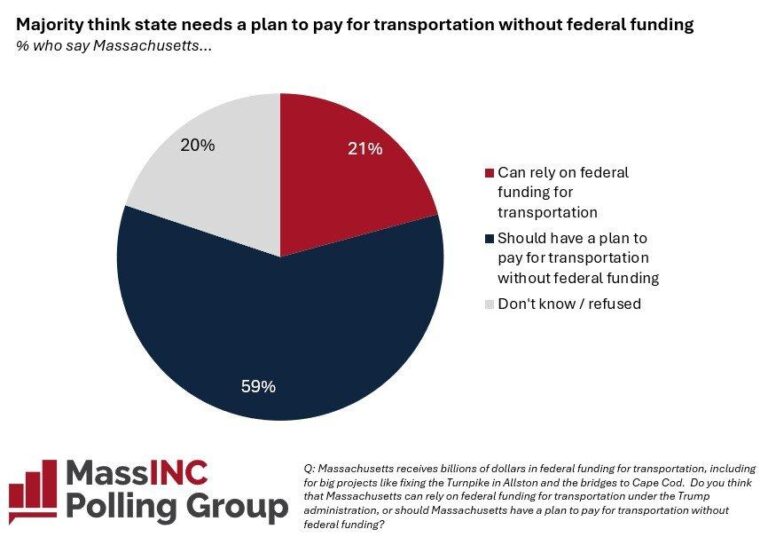Massachusetts has announced a landmark allocation of $8 billion for transportation in its fiscal year 2026 budget, signaling a significant investment in the state’s infrastructure.This unprecedented funding aims to enhance the efficiency, safety, and sustainability of the Commonwealth’s transportation systems, including roadways, public transit, and vehicle services. The allocation underscores Massachusetts’ commitment to modernizing its transportation networks to meet growing demand and future challenges.
Table of Contents
- Massachusetts Unveils Ambitious $8 Billion Transportation Budget for Fiscal Year 2026
- Focus on Infrastructure Modernization to Improve Commuter Experience
- Investment Priorities Include Public Transit Expansion and Road Safety Enhancements
- Experts Recommend Transparent Allocation and Focus on Sustainable Mobility Initiatives
- Final Thoughts
Massachusetts Unveils Ambitious $8 Billion Transportation Budget for Fiscal Year 2026
In a significant move to enhance the state’s infrastructure, Massachusetts has announced a robust $8 billion transportation budget for Fiscal Year 2026. This allocation marks a historic investment aimed at modernizing transit systems, improving accessibility, and supporting regional connectivity across the Commonwealth. Key funding highlights include an allocation of $470 million specifically dedicated to the Massachusetts Bay Transportation Authority (MBTA),underlining the state’s commitment to upgrading public transit services and expanding capacity to meet growing demand.
Beyond the MBTA, the budget also emphasizes equitable transit solutions with $115 million designated for regional transit grants and $35 million to support reduced fare programs for income-eligible riders. This thorough funding strategy reflects a concerted effort to balance robust infrastructure development with inclusive policies to improve mobility for all residents. Core allocations include:
- Enhanced MBTA service improvements and modernization projects
- Targeted support for regional transit authorities through grants
- Affordability initiatives tailored to low-income commuters
Focus on Infrastructure Modernization to Improve Commuter Experience
The $8 billion transportation budget for FY2026 marks a significant commitment by Massachusetts to modernize critical infrastructure and elevate the daily commute for thousands of residents. Key projects include extensive upgrades to aging roadways, bridges, and rail systems managed by the Massachusetts Department of Transportation. By incorporating state-of-the-art technology and sustainable materials, the plan aims to enhance safety, reduce congestion, and improve overall travel efficiency across urban and suburban corridors. This modernization effort also targets critical transit hubs to create seamless, accessible connections between multiple transportation modes.
Among the prioritized initiatives are:
- Expansion and modernization of commuter rail lines to boost capacity and decrease delays
- Implementation of smart traffic management systems to optimize flow and reduce emissions
- Upgrading key MBTA stations for improved accessibility and rider experience
- Investments in sustainable infrastructure supporting electric and hybrid public transportation fleets
These targeted improvements underscore a forward-looking vision that links infrastructure resilience with environmental stewardship and rider comfort, positioning Massachusetts as a leader in North American transit modernization.
Investment Priorities Include Public Transit Expansion and Road Safety Enhancements
Massachusetts is channeling a significant portion of its $8 billion transportation budget toward expanding public transit networks and enhancing road safety measures. This strategic allocation aims to address growing commuter demands while promoting sustainable travel options. Investments will focus on upgrading bus routes and increasing service frequency, alongside modernizing infrastructure to better connect urban and suburban areas. These efforts are designed to reduce congestion, lower emissions, and improve overall accessibility for residents and visitors alike.
In tandem with transit expansion, the state is implementing a suite of road safety enhancements that include:
- Installation of advanced pedestrian crossings and improved lighting in high-traffic zones
- Deployment of smart traffic signals to optimize flow and reduce accident risks
- Enhanced bicycle lane networks promoting safer multi-modal travel
- Upgrades to critical intersections targeting accident-prone areas
These measures underscore Massachusetts’ commitment to creating a safer, more efficient transportation ecosystem for all users.
Experts Recommend Transparent Allocation and Focus on Sustainable Mobility Initiatives
Clarity in funding allocation remains a cornerstone of the ongoing debate surrounding Massachusetts’ $8 billion transportation budget for FY2026. Industry analysts emphasize that detailed, open reporting on expenditures is essential to ensure public trust and maximize impact. By adopting clear frameworks that outline spending priorities, policymakers can facilitate greater accountability and allow citizens to track how funds are directed toward vital infrastructure projects.
Experts also urge a strategic pivot toward sustainable mobility initiatives that reduce environmental impact while enhancing connectivity. Highlighted priorities include:
- Expansion of electric vehicle charging networks
- Investment in upgraded public transit systems
- Support for bike lanes and pedestrian-friendly urban design
- Implementation of smart traffic management technologies
These efforts are viewed as crucial for meeting the state’s long-term climate goals and improving quality of life through cleaner, more efficient transportation.
Final Thoughts
As Massachusetts commits $8 billion to its FY2026 transportation budget, the state signals a robust investment in infrastructure aimed at enhancing connectivity, safety, and economic growth. This funding underscores Massachusetts’ dedication to addressing current transportation challenges while preparing for future demands. Stakeholders and residents alike will be watching closely to see how these resources translate into tangible improvements across the Commonwealth’s transit systems and roadways.

